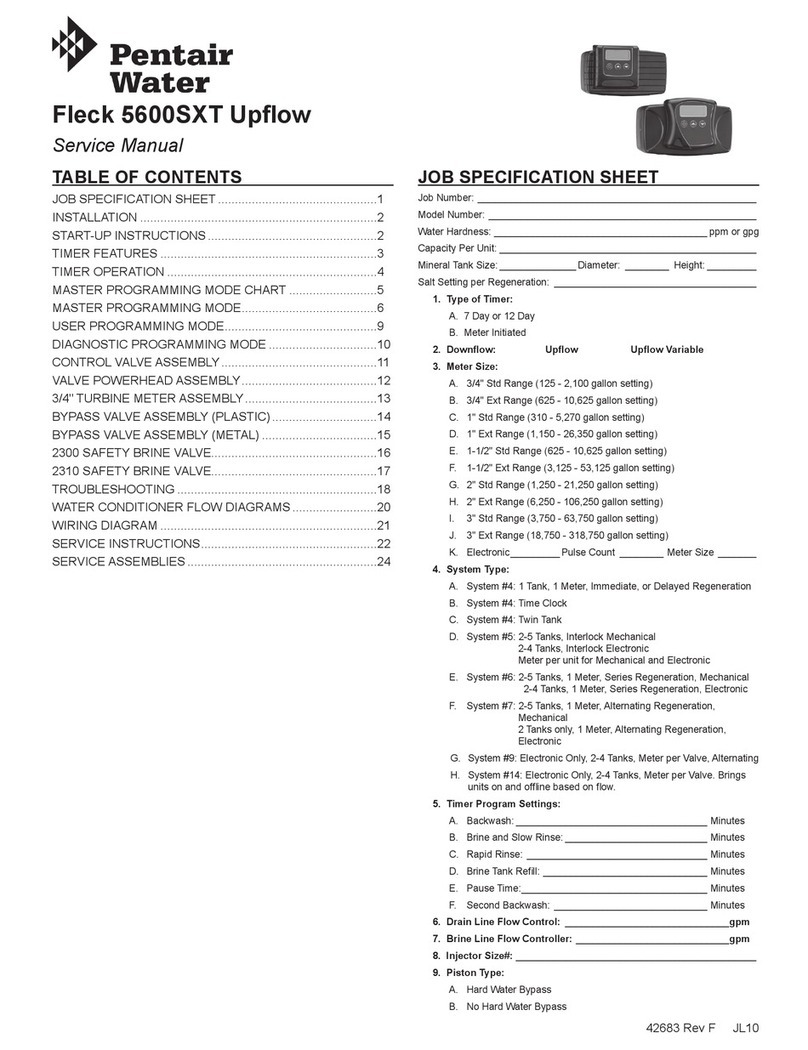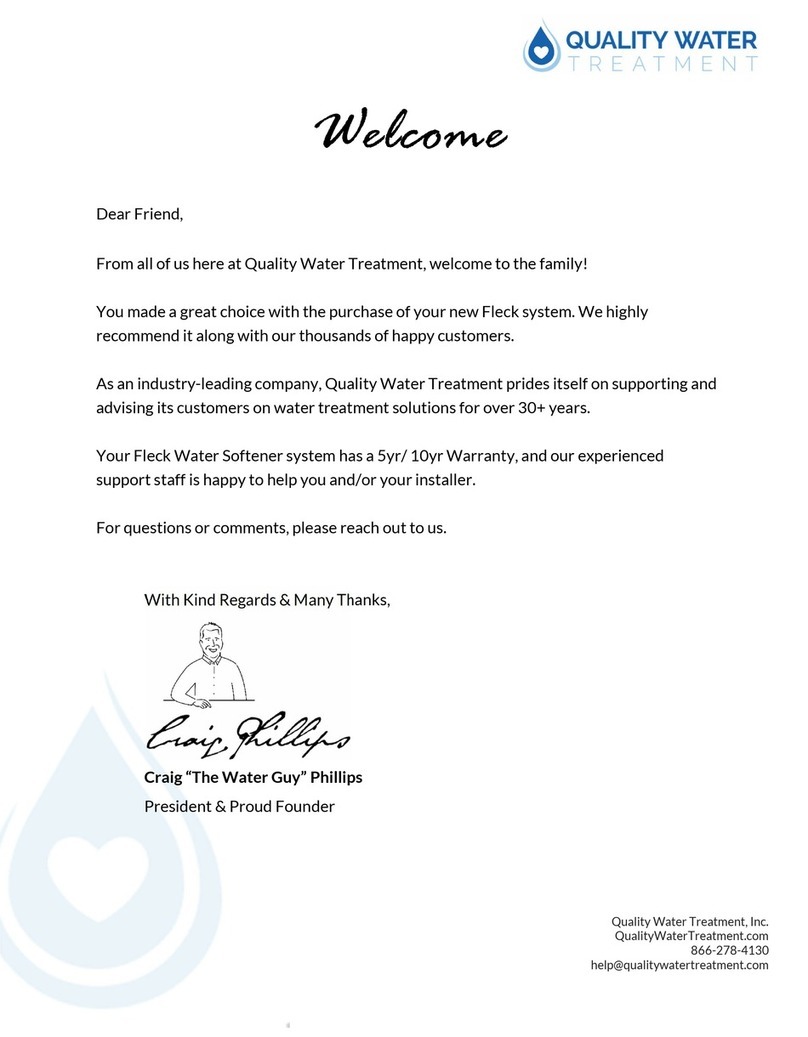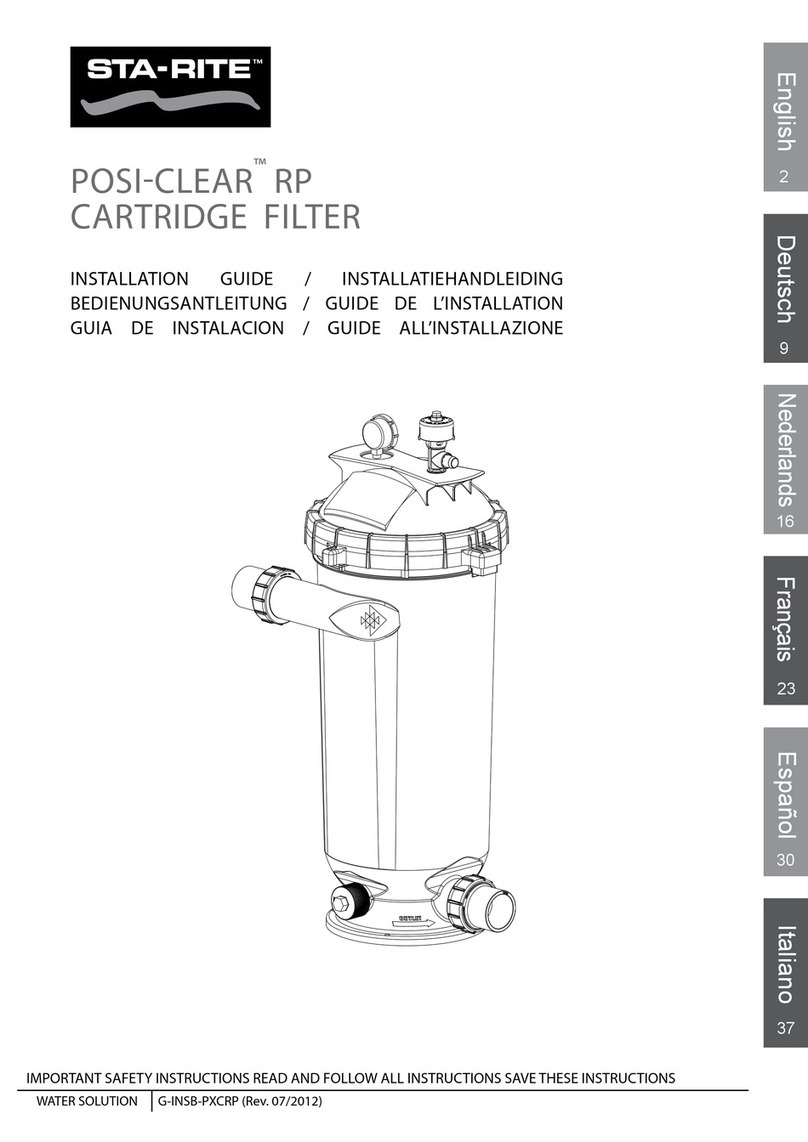
GENERAL PRECAUTIONS
WARNING: Donotusewithwaterthat is
microbiologically unsafe or of unknown
quality without adequate disinfection before
or after the system. Systems certified for
cyst reduction may be used on disinfected
waters that may contain filterable cysts.
WARNING: ThePB4RO containsareplaceableRO
membrane cartridge that is critical to the
efficiency of the system. Replacement of the
RO membrane cartridge should be with one
of identical specifications, as defined by the
manufacturer, to assure the same efficiency
and contaminant reduction performance.
WARNING: ThePB4RO containsareplaceableRO
membrane cartridge, critical for the effective
reduction of total dissolved solids. Product
water should be tested periodically to verify
that the system is working properly.
WARNING: ThePB4RO isacceptablefortreatment
of influent concentrations of no more
than 27 mg/L nitrate and 3 mg/L nitrite in
combination measured as N and is certified
for nitrate/nitrite reduction only for water
supplies with a pressure of 40 psig (280 kPa)
or greater.
WARNING: ThePB4RO shall only beusedfor arsenic
reduction on chlorinated water supplies
containing detectable residual free chlorine
at the system inlet. Water systems using an
in-line chlorinator should provide a one-
minute chlorine contact time before the unit.
WARNING: ThePB4RO will not protect against disease-
causing bacteria or remove naturally-
occurring harmless bacteria.
CAUTION
ThePB4ROmust be protectedagainstfreezing
which can cause the filter housing to crack,
resulting in water leakage.
CAUTION
Turn off water supply to head without cartridge if
it must be left unattended for an extended period
of time.
CAUTION
Do not use electrical heating tape on this unit.
NOTE: Substances listed as reduced are not necessarily
in your water. System must be maintained
according tomanufacturer's instructions, including
replacement of filter cartridges.
NOTE: Your water must be within required limits for
satisfactory operation. If not, the RO membrane
cartridge’s life may be shortened and your warranty
will be voided (see Operating Specifications).
NOTE: Install on cold water line only.
NOTE: Do not install where system will be exposed to
direct sunlight.
NOTE: Make certain that installation complies with all state
and local laws and regulations.
NOTE: The filter cartridges and RO membrane cartridge
included with the system have limited service lives.
Changes in taste, odor, and color of the filtered
water indicate that the cartridges and/or membrane
should be replaced.
NOTE: During extended periods of non-use (such as
during a vacation), remove the membrane cartridge
and the filter cartridges from the unit and place
them in a sealed plastic bag. Store the cartridges
in the refrigerator for future use. When re-starting
the unit, replace all cartridges and flush per
instructions.
NOTE: If the PB4RO stands for more than 2 to 3 days
without being used, the storage tank should be
emptied.
NOTE: Use only Teflon® tape without adhesive backing
to seal joints. Do not use pipe compound (“pipe
dope”), sticks, or similar compounds with this
unit; they contain petroleum derivatives which can
cause crazing and cracking of the plastic in the
filter housing.
NOTE: Use only soap and water to clean components.
NOTE: Do not use aerosol sprays (bug spray, cleaning
fluids, etc.) near the PB4RO. They contain organic
solvents which will cause crazing and cracking of
the plastic in the filter housing.
NOTE: After prolonged periods of non-use, such as a
vacation, it is recommended that the system be
flushed thoroughly. Let water run for 2 to 3 minutes
before using.
NOTE: Do not use a torch near the unit.
HOW REVERSE OSMOSIS (RO) WORKS
The PB4RO uses a semi-permeable membrane to reduce
dissolved salts, improving the taste and odor of your water. The
RO membrane cartridge contains multiple layers of micron-thin
film wound around a hollow center core. Water molecules can
pass through the cartridge, while dissolved salts are rejected.
Your household water supply is pre-filtered to reduce dirt and
chlorine that may foul the membrane. The RO membrane
cartridge separates this pre-filtered water into PRODUCT
WATER and REJECT WATER. Your household water pressure
forces water through the membrane within the RO membrane
cartridge, and into the storage tank. This is product water.
Dissolved salts cannot pass through the membrane and are
sent to the drain as reject water. When you open the faucet,
product water (permeate) is drawn from the storage tank
through a post-polishing filter. The post-polishing filter takes out
any remaining taste or odor in the water and provides you and
your family with cleaner, great-tasting water.
The PB4RO also features an auto shut-off valve, which shuts
off the system once the pressure in the storage tank reaches
2/3 of the incoming water pressure (your household water
pressure). When you open the faucet to draw water from
the storage tank, the pressure inside the tank drops and
the auto shut-off valve opens. The system then begins to
operate, replenishing the water you took from the storage tank.
Depending on the system's efficiency, for each gallon of water
produced, up to 7 gallons are discharged as reject water. The
storage tank can hold up to 3.2 gallons (12.1 L) of water at a
time, more than enough for the average family’s drinking and
cooking needs.
NOTE: When used under operating conditions specified
on page 1 of this manual, the RO membrane
cartridge of the PB4RO should last 12–24 months.
The precise life span of the PB4RO's RO membrane
cartridge will depend on the quality of the water
entering the system, and the frequency with which
you use it. Frequent use prevents the dissolved
salts from building up on the membrane as scale.
The more water the system is required to produce,
the longer the membrane will last. You may wish
to find a variety of uses for your PB4RO system in
order to prolong the life of the membrane.
2 • JA12 Model PB4RO-75 Undersink Reverse Osmosis System






























